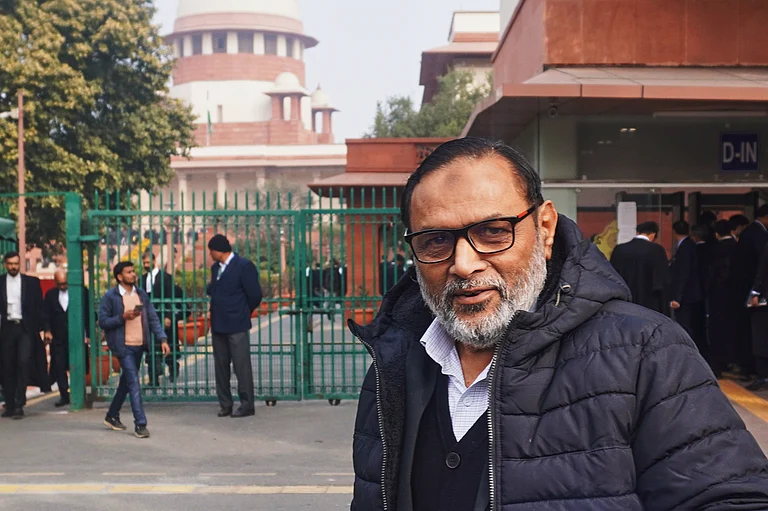It boggles the mind to think it’s almost 40 years now. But why is it not surprising to realise that the issues have not changed one bit? Should an aberration, an abnormality, a wrong, be allowed to exist unreported? Is it more intolerable that a crime is committed, every minute, silently, or that it is reported? Which is worse? That a grievous flaw exists? Or that it is demonstrated to exist, so that something can be done about it? The UIDAI filing an FIR against The Tribune journalist Rachna Khaira, for a story that exposed how easy it is to buy your Aadhaar biometric data, brought back memories. Should a journalist push the envelope by participating in a crime to show it exists? My answer, after all these years, is still yes.
The day my Kamla story appeared in The Indian Express in 1981, the first phone call I received was from a police officer. Not to tell me that the government had registered a criminal case against me. It was a phone call to compliment me for the expose. Now, after more than 35 years, I have no qualms about revealing the name of that officer. He was K.K. Paul, an IPS officer, currently governor of Uttarakhand.
…in a journalism course. It’s probably best to recap the whole thing for the benefit of younger readers. Essentially, this used to happen in parts of central India, and patronage from police and politicians was a no-brainer. People would buy women. Like buying a new pair of shoes with the change of season. The question was how to bring this practice to the light of day. We discussed it from all angles: the consensus was that simply reporting it would serve no purpose. We decided to go the whole hog, and participate in that moral wrong: actually buy a woman. Quod erat demonstrandum.
It took me almost a year to penetrate the racket. It was an area where country-made pistols were bought like packs of cigarettes. Arun Shourie, my editor, knew the project we were embarking upon could land us in trouble with the law. We worked out a strategy. He wrote letters to three prominent persons, including the then chief justice of India, P.N. Bhagwati, setting out our intentions behind participating in that crime of purchasing a woman. In sealed envelopes, along with covering notes requesting them not to open the letters until they were requested to do so.
I ‘bought’ Kamla, a girl from the Morena-Agra-Dholpur area—the trijunction of Rajasthan, Madhya Pradesh and UP. I had put up at the circuit house in Morena district headquarters. Asif Ibrahim, who was to become the IB chief in 2013-14, was chief of the Morena district police at that time. Morena is one end of the dreaded Chambal ravines, and Ibrahim had known to have taken down a few daakus those days. Trafficking of young girls was rampant in those parts. A story on the issue needed to have a bit of shock value, we reckoned. Maybe our guess was right. Forty years later, the story survives. With even a film based on it: Marc Zuber played my character and Deepti Naval essayed the timid Kamla.
Was our little moral transgression—meant to shine a torch right into the dark—read right? Were the Congress governments at the Centre and in Madhya Pradesh alive to this journalistic intervention? Well, they did act swiftly. The Madhya Pradesh police registered a criminal case against me under all kinds of sections of the trafficking act. I had my friends too. A well-meaning T.R. Kakkar, who later became Delhi police commissioner, tipped me off about MP cops in his office. They’d sought the help of Delhi Police to arrest me. Kakkar thought otherwise. In his judgement, my expose was not a criminal act because the intention was to expose a horrific crime in our society. Shourie rushed to the Supreme Court and we got a stay against any arrest. Later, as the Supreme Court directed, the government ordered an inquiry by three states that confirmed the existence of large-scale trafficking. In raw words, the sale-purchase of women in what was a catchment area for big brothel bazaars of India’s big metros.
As I reflect on the Kamla story in the light of whatever’s happening in society and media now, a few things come to mind. One of them being the tendency to offer news stories as instant consumables—some sort of fast food for the mind. This is a way of doing journalism, of thinking about what we in the media do, that does not realise the lasting impact it has on our system. Journalists sometimes have to show society its own ugly face in the mirror. I say we need more Rachna Khairas.
(Investigative journalist Sarin controversially ‘bought’ Kamla from a village to expose the trafficking racket in the Chambal area. Vijay Tendulkar wrote a play on the episode, titled Kamla, and it was made into an acclaimed film of the same name.)
(The writer is a senior journalist)



















